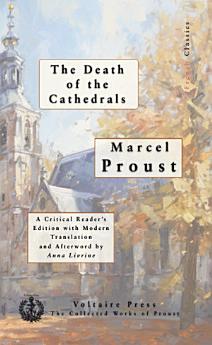The Death of the Cathedrals
معلومات عن هذا الكتاب الإلكتروني
The text opens with a simple thought experiment: imagine that faith has vanished and the great churches stand empty, admired only as stone shells. From that image Proust argues that architecture, sculpture, music, and liturgy form a single whole; remove the ritual and the building loses its inner voice. He praises Mass as the element that keeps the carvings and stained glass “alive,” and urges the government to support religious use of the monuments just as it sponsors classical drama at Orange.
Seen today, the article offers a clear snapshot of early-twentieth-century France, where republican secularism collided with a lingering Catholic culture and a vacuum left by Protestant Iconoclasm. Proust’s plea links him to English art critic John Ruskin, whose ideas on sacred buildings he admired, yet the essay also exposes the limit of his modern subjectivism: he appeals to shared heritage while relying on personal taste rather than a fixed moral order. La Mort des Cathédrales remains a short but pointed reminder that public art and public belief can be hard to separate once history turns them into neighbors.
This critical reader’s edition presents a modern translation of the original manuscript, crafted for the contemporary reader with lucid language and streamlined sentences that illuminate Proust’s intricate French syntax and period‑specific allusions. Supplementary material enriches the text with autobiographical, historical, and linguistic context, including an afterword by the translator on Proust’s personal history, cultural impact, and intellectual legacy, an index of the philosophical concepts he weaves—highlighting his explorations of memory, time, and the influence of Henri Bergson—a comprehensive chronological list of his published writings, and a detailed timeline of his life, emphasizing the friendships and social circles that shaped his artistic vision.








